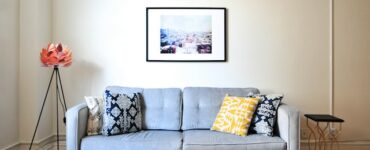Minimalist design principles revolve around the idea of simplifying and reducing excess allowing for a clean and uncluttered aesthetic. With a focus on essential elements minimalist design creates spaces that are calming functional and visually impactful. If you appreciate a sense of calmness order and the beauty of simplicity incorporating minimalist design principles can transform your home. Here are the key principles that define minimalist design:
1. Simplify and Streamline
At the core of minimalist design is the practice of simplification. This involves eliminating unnecessary clutter ornamentation and visual distractions. Keep only what is essential and purposeful removing any excess that does not serve a specific function or add value to the space. By simplifying the design you create a sense of clarity and focus.
2. Clean Lines and Geometric Shapes
Minimalist design embraces clean lines and geometric shapes. Straight lines right angles and simple curves form the basis of furniture architectural elements and decor. This clean and precise aesthetic adds a sense of order and visual harmony to the space.
3. Limited Color Palette
A limited color palette is a key aspect of minimalist design. Neutral colors such as whites grays blacks and earth tones are commonly used to create a calm and cohesive atmosphere. The absence of vibrant colors allows the focus to shift towards the form texture and materials of the elements in the space.
4. Abundance of Negative Space
Negative space also known as white space is the empty or unoccupied area in a design. In minimalist design negative space is highly valued and strategically utilized. It helps to create a sense of openness balance and breathing room within the space. Embracing negative space allows the essential elements to stand out and be appreciated.
5. Functional and Purposeful Design
Minimalist design places a strong emphasis on functionality and purpose. Every element in a minimalist space should serve a specific function and contribute to the overall design concept. Furniture pieces are often sleek and multifunctional serving more than one purpose to maximize space and utility.
6. Thoughtful Material Selection
The choice of materials in minimalist design is essential. Natural and high-quality materials such as wood stone glass and metal are often favored for their simplicity and timeless appeal. The focus is on the texture and intrinsic beauty of the materials rather than excessive embellishments or patterns.
7. Clutter-Free Surfaces
A key principle of minimalist design is to maintain clutter-free surfaces. Countertops tables and shelves should be kept clear of unnecessary objects. This not only enhances the clean and uncluttered aesthetic but also allows the eye to rest on the essential elements within the space.
8. Quality over Quantity
In minimalist design quality takes precedence over quantity. Rather than filling a space with numerous decorative items focus on carefully selecting a few high-quality pieces that have significant visual impact. By choosing quality over quantity you create a more refined and intentional design.
9. Balance and Symmetry
Minimalist design often incorporates balance and symmetry to achieve visual harmony. The arrangement of furniture lighting and decorative elements follows a sense of equilibrium and proportion. This creates a calming and organized atmosphere.
10. Intentional Lighting
Lighting plays a crucial role in minimalist design. Natural light is highly valued and maximized through unobstructed windows and light-colored surfaces. Artificial lighting is often used sparingly and thoughtfully with an emphasis on clean and simple fixtures that complement the overall aesthetic.
By embracing minimalist design principles you can create a space that exudes simplicity functionality and beauty. Simplify your surroundings focus on essential elements and allow the design to breathe. With a mindful approach to space materials and color minimalist design can transform your home into a serene and visually appealing sanctuary.

Hi, I’m Jodie! I’m a spain-Moroccan writer with a passion for imagination, adventures, magic and stories with heart.
Please don’t hesitate to contact me for any questions, suggestions, comments or feedback.

















Add comment